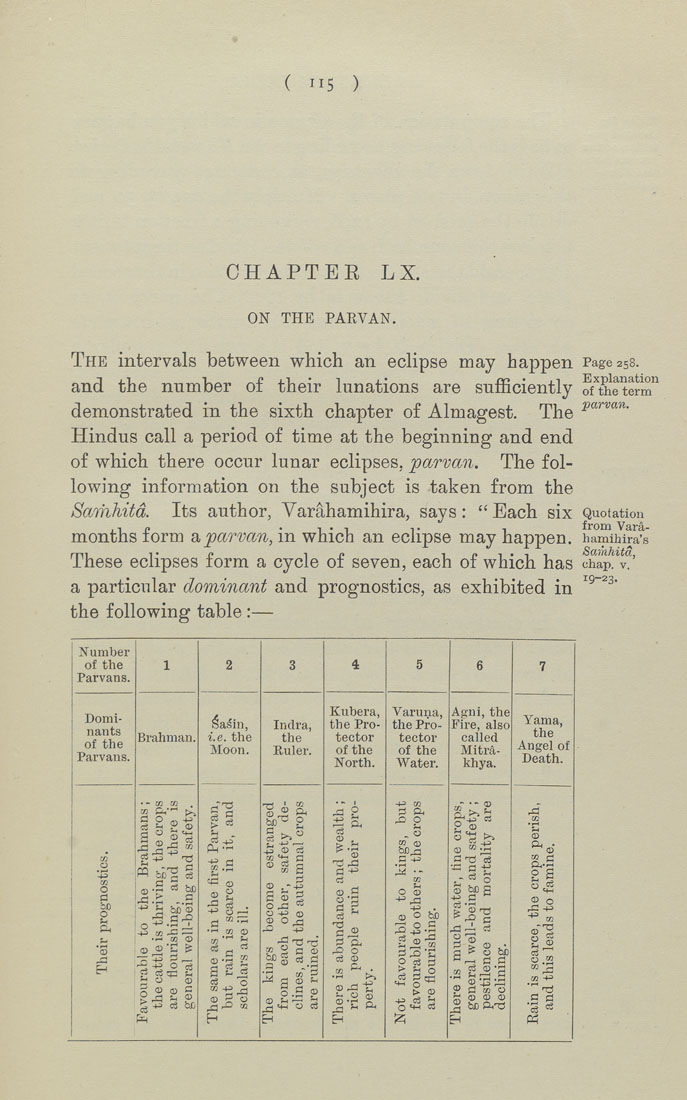( 115 )
CHAPTEE LX.
ON THE PARVAN.
The intervals between which an eclipse may happen Page 258.
and the number of their lunations are sufficiently ^i^thftlrm^
demonstrated in the sixth chapter of Almagest. The ^'"''"'"'
Hindus call a period of time at the beginning and end
of which there occur lunar eclipses, parvan. The fol¬
lowing information on the subject is taken from the
Samhitd. Its author, Varahamihira, says: " Each six Quotation
. T /. . , . , ,. - from Vara-
months lorm o,parvan, m which an eclipse may happen, hamihira's
These eclipses form a cycle of seven, each of which has chap"v"'
a particular dominant and prognostics, as exhibited in ^^ ^^"
the following table :—
Number
of the
Parvans.
1
2
3
4
5
6
7
Domi¬
nants
of the
Parvans.
Brahman.
Sa^in,
i.e. the
Moon.
Indra,
the
Euler.
Kubera,
the Pro¬
tector
of the
North.
Varuna,
the Pro¬
tector
of the
Water.
Agni, the
Fire, also
called
Mitra-
khya.
Yam a,
the
Angel of
Death.
Their prognostics.
Favourable to the Brahmans;
the cattle is thriving, the crops
are flourishing, and there is
general well-being and safety.
The same as in the first Parvan,
but rain is scarce in it, and
scholars are ill.
The kings become estranged
from each other, safety de¬
clines, and the autumnal crops
are ruined.
There is abundance and wealth ;
rich people ruin their pro¬
perty.
Not favourable to kings, but
favourable to others ; the crops
are flourishing.
There is much water, tine crops,
general well-being and safety ;
pestilence and mortality are
declining.
Rain is scarce, the crops perish,
and this leads to famine.
|








